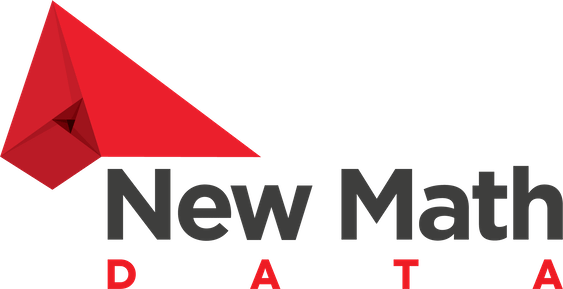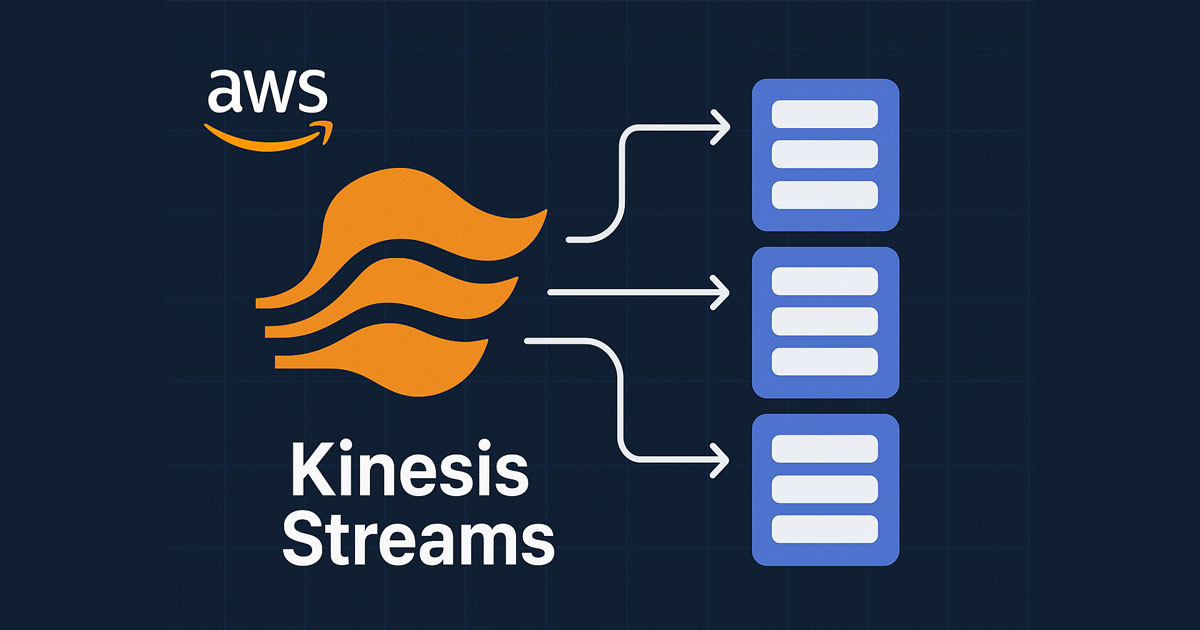A Practical Guide to AWS Kinesis Data Streams
Enterprise applications have shifted from batch processing to real-time demands. Some must detect fraud in milliseconds, serve instant recommendations, or even trigger live monitoring alerts. Traditional message queues handle simple decoupling but fall short on throughput, ordering, and replay capabilities that streaming workloads require. AWS Kinesis Data Streams fills this gap, processing millions of records per second with multiple consumers reading the same ordered stream. This guide covers the production realities: architecture, costs, and patterns that work at enterprise scale. It will also help you determine if Kinesis Data Streams is the right service for your use case.
Kinesis Streams: The Enterprise Perspective
Core Architecture Components

In the above image, take a peek at a high-level architecture of Kinesis Data Streams. Data flows in real time from producers into the Kinesis stream, then to consumers, where various AWS services such as S3, DynamoDB, or Redshift store the results.
Kinesis Streams organizes data into shards. Shards are ordered sequences of records that form the basic unit of capacity. Each shard can handle up to 1,000 records per second or 1MB per second for writes, and up to 2MB per second for reads. Records within a shard are strictly ordered by arrival time and assigned a sequence number. Total capacity of the stream is the sum of the capacities of its shards.
The partition key determines which shard receives each record. Kinesis uses MD5 hashing to distribute records across available shards based on this key. Choosing the right partition key is critical as it affects both load distribution and the ordering guarantees your application receives.
Consumers read from shards either through the Kinesis Client Library (KCL), which handles coordination and checkpointing, or via direct API calls for custom consumption patterns. Multiple consumer applications can process the same stream independently, each maintaining its own position.
Service Comparison: When Kinesis Makes Sense
Choose Kinesis Data Streams when you need:
- High throughput with ordering guarantees
- Multiple consumers processing the same data
- Replay capability for reprocessing or recovery
- Integration with AWS analytics services
Avoid Kinesis Data Streams when:
- Simple request-response patterns — Kinesis is overkill for basic job queues or task processing, where you just need to send a message and get it processed once
- Complex routing logic — If you need sophisticated event filtering, content-based routing, or integration with third-party SaaS applications, EventBridge handles routing complexity better
- You need exactly-once delivery guarantees — Kinesis provides at-least-once delivery, meaning duplicate messages are possible, while SQS FIFO queues can guarantee exactly-once processing
- Batch loading into data warehouses or databases — If your goal is primarily moving data into destinations like RDS, Redshift, or S3 for analytics, Kinesis Data Firehose is a managed service that handles the batching, compression, and delivery automatically without requiring custom consumer logic
While working with a client recently, I experienced this pivot firsthand when our initial pipeline design (API → Kinesis Streams → RDS → zero-ETL to Redshift) hit a wall with millions of records per hour. RDS simply isn’t built for high-volume streaming ingestion, and the zero-ETL setup became problematic under load. Switching to Kinesis Firehose with direct S3 delivery solved the scalability issues while cutting costs significantly.
Production Implementation Essentials
Partition Key Strategy: The Foundation of Performance
Your partition key choice directly impacts both performance and functionality. A well-chosen key distributes load evenly while preserving the ordering semantics your application requires.
# Good: Distributes load while maintaining user session ordering
partition_key = f"user:{user_id}"
# Bad: Creates hot shards
partition_key = "logs" # All records go to same shard
# Good: Time-based distribution for high-volume logging
partition_key = f"logs:{timestamp // 60}" # One partition per minute
Common Patterns:
- User-based:
user:{user_id}— ensures all events for a user are ordered - Device-based:
device:{device_id}— maintains sensor data sequence - Time-windowed:
category:{timestamp_bucket}— distributes load over time - Composite:
region:{region}:user:{user_id}— balances geography and user context
Monitor your partition key distribution using CloudWatch metrics. The IncomingRecords metric by shard reveals hot spots that indicate poor key selection.
Error Handling and Poison Pill Management
A single record that is malformed or corrupted can block the entire shard from being processed due to the “in-order” guarantee of Kinesis Streams. These problematic records are called “poison pills” because they can block the entire processing pipeline, causing healthy records to back up behind them.
Production streams inevitably encounter malformed records, processing failures, and transient errors, making robust error handling critical to prevent these issues from blocking downstream processing and degrading system performance.
def process_kinesis_records(records):
failed_records = []
for record in records:
try:
# Decode and validate record
data = json.loads(base64.b64decode(record['kinesis']['data']))
# Your business logic here
process_business_logic(data)
except json.JSONDecodeError:
# Log poison pill but don't retry
logger.error(f"Invalid JSON in record {record['kinesis']['sequenceNumber']}")
continue
except TransientError as e:
# Collect for retry
failed_records.append(record)
logger.warning(f"Transient error: {e}")
except Exception as e:
# Log and skip permanent failures
logger.error(f"Processing failed for record {record['kinesis']['sequenceNumber']}: {e}")
continue
# Return failed records for Lambda retry
return {"batchItemFailures": [{"itemIdentifier": r['kinesis']['sequenceNumber']} for r in failed_records]}
Best practices:
- Validate data at the producer level to prevent malformed or invalid records from entering the stream
- Implement exponential backoff for transient failures
- Use dead letter queues for poison pills
- Set up alarms on metrics such as
IteratorAgeto detect processing lags
Cost Optimization Reality Check
Kinesis offers two pricing models: provisioned capacity (pay for allocated shards) and on-demand (pay for actual usage). Understanding the trade-offs helps you optimize costs based on your traffic patterns.
First, here’s a terminology that might be useful:
PUT Payload Unit (25 KB): A record is the data that your data producer adds to your Amazon Kinesis data stream. A PUT Payload Unit is counted in 25 KB payload “chunks” that comprise a record. For example, a 5 KB record contains one PUT Payload Unit, and a 1 MB record contains 40 PUT Payload Units. The PUT Payload Unit is charged a per-million PUT Payload Units rate.
Provisioned Mode: Predictable Workloads
With provisioned mode, you pay for shard capacity whether you use it or not:
- Shard cost: $0.015 per hour per shard
- PUT payload units: $0.014 per million units (25KB chunks)
- Extended retention: $0.02 per shard hour (beyond 24 hours, up to 7 days)
On-Demand Mode: Variable Workloads
On-demand scales automatically but costs more per GB:
- Per stream: $0.04 per hour
- Data ingested: $0.08 per GB (includes 24-hour retention)
- Data retrieved: $0.04 per GB
When to Choose Each Mode
Use provisioned when:
- Traffic is predictable or grows gradually
- Running 24/7 with consistent throughput
- Cost optimization is a priority
Use on-demand when:
- Traffic is unpredictable or spiky
- New applications with unknown patterns
- Development/testing environments
Retention Cost Strategy
Extended retention beyond 24 hours adds significant cost:
- 7-day retention: $0.02 per shard hour
- Long-term retention: $0.023 per GB-month (beyond 7 days)
For most use cases, archive to S3 after 24-48 hours rather than using extended Kinesis retention. S3 Standard costs ~$0.023/GB-month, similar to Kinesis long-term retention but with better analytics integration.
Production Best Practices
Running Kinesis Streams reliably at scale requires attention to partition strategy, monitoring, and operational patterns that prevent common production pitfalls. Here is a list of best practices we have covered in the prior sections.
Partition Key Strategy
Use high-cardinality partition keys to distribute load evenly. Avoid static values like “logs” or coarse timestamps that create hot shards. Instead, use patterns like user:{user_id} or region:{region}:service:{service_name} that maintain ordering while spreading traffic.
Monitoring and Alerting
Monitor GetRecords.IteratorAgeMilliseconds to detect consumer lag before it impacts users. Set CloudWatch alarms at 30-60 seconds for early warning. Enable enhanced monitoring for detailed shard-level metrics, or integrate with Kinesis Data Analytics for real-time processing insights.
Error Handling
Implement exponential backoff and dead letter queues for failed records. Use the KCL (Kinesis Client Library) for automatic load balancing and checkpointing when multiple consumers process the same stream. For Lambda consumers, set appropriate batch sizes (10–100 records) to balance processing latency with cost efficiency.
Cost and Security Controls
Archive to S3 after 24–48 hours instead of using extended Kinesis retention. It’s significantly cheaper for long-term storage. Encrypt data at rest and in transit using KMS keys for sensitive workloads. Use VPC endpoints to keep traffic internal and reduce data transfer costs.
Operational Resilience
Regularly test re-sharding and consumer restart scenarios in staging environments. These operations are common in production but can disrupt processing if consumers aren’t designed to handle them gracefully.
Conclusion & Decision Framework
AWS Kinesis Streams excels in scenarios requiring high-throughput, ordered data processing with multiple consumers. It’s particularly valuable for real-time analytics, event-driven architectures, and applications that need to replay data for reprocessing or recovery.
Choose Kinesis Streams when:
- You need sustained throughput above 1,000 records/second
- Multiple applications must process the same data stream
- Ordering guarantees are critical for your use case
- You require data replay capabilities
- Integration with AWS analytics services is important
Consider alternatives when:
- Simple point-to-point messaging suffices (use SQS)
- You need complex routing and filtering (use EventBridge)
- Exactly-once delivery is required (use SQS FIFO)
- Cost optimization is more important than features (use Firehose for ETL)
The operational investment in Kinesis pays dividends when your application demands reliable, scalable real-time data processing. Start with conservative shard counts, monitor utilization closely, and scale based on actual demand patterns rather than peak projections.
For organizations building data-driven applications, Kinesis Streams provides the foundation for real-time insights without the operational overhead of managing Apache Kafka clusters. When implemented with proper partition key strategy, error handling, and cost controls, it becomes a robust component of modern cloud architectures.
At New Math Data, we help organizations design and implement scalable data streaming architectures using AWS services like Kinesis. Whether you’re migrating from batch processing or building greenfield real-time applications, we provide the expertise to get it right the first time. Reach out to discuss your streaming data challenges.

